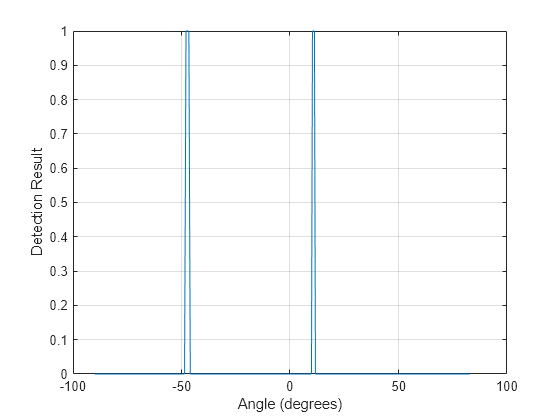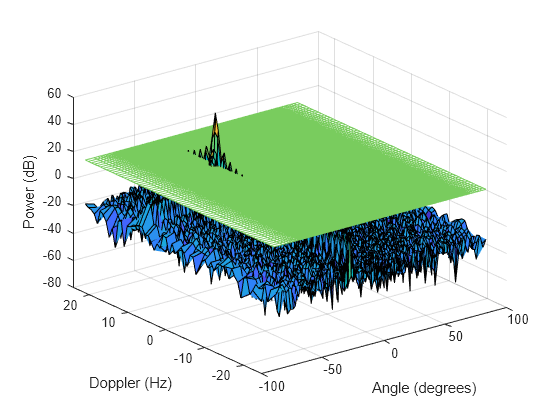phased.GLRTDetector
Description
The generalized likelihood ratio test detector (GLRT) can detect signals with unknown parameters in the presence of noise. Unknown parameters include signal amplitude, phase, frequency, and arrival times. The detector replaces unknown parameters with their maximum likelihood estimates under the signal absent hypothesis H0 or the alternative signal present hypothesis H1 and then uses the LRT detector to output detection results.
Create the
phased.GLRTDetectorobject and set its properties.Call the object with arguments, as if it were a function.
To learn more about how System objects work, see What Are System Objects?
Creation
Description
detector = phased.GLRTDetectordetector
System object™ with default properties.
detector = phased.GLRTDetector(Name = Value)detector
System object with the specified property Name set to the specified
Value. You can specify additional name-value pair arguments in any
order as (Name1 = Value1, …
,NameN = ValueN).
Properties
Usage
Syntax
Description
You can combine optional input and output arguments when their enabling properties are
set. Optional inputs and outputs must be listed in the same order as the order of the
enabling properties. For example, [Y,stat,th,estparam] =
detector(X,hyp,obs,ncov).
Input Arguments
Output Arguments
Object Functions
To use an object function, specify the
System object as the first input argument. For
example, to release system resources of a System object named obj, use
this syntax:
release(obj)
Examples
More About
References
[1] Steven M. Kay, Fundamentals of Statistical Signal Processing, Detection Theory, Prentice-Hall PTR, 1993.
[2] Mark A. Richards, Fundamentals of Radar Signal Processing, Third edition, McGraw-Hill Education, 2022.
Extended Capabilities
Version History
Introduced in R2023b
See Also
phased.LRTDetector | npwgnthresh | rocsnr | rocpfa | phased.CFARDetector | phased.CFARDetector2D

